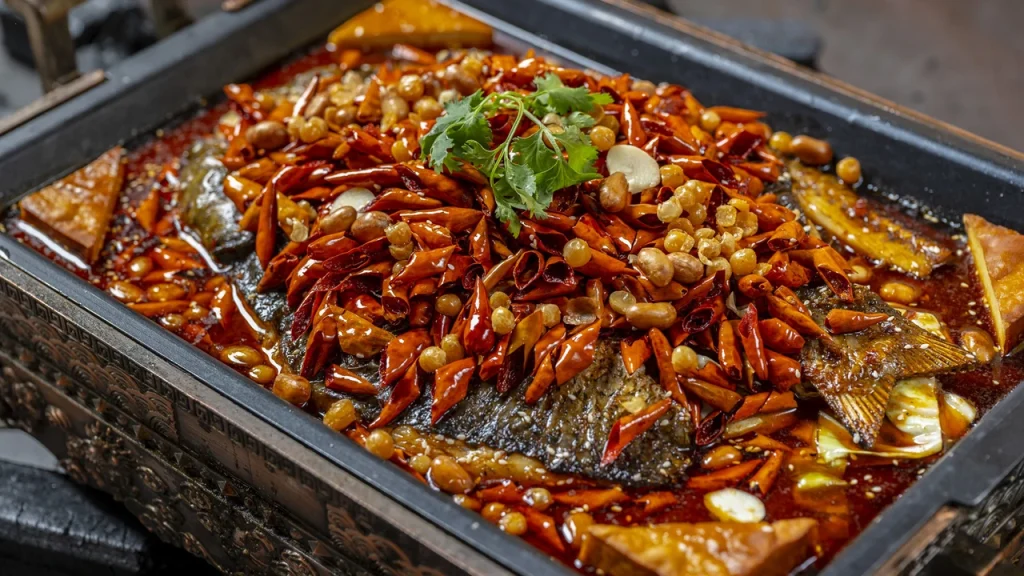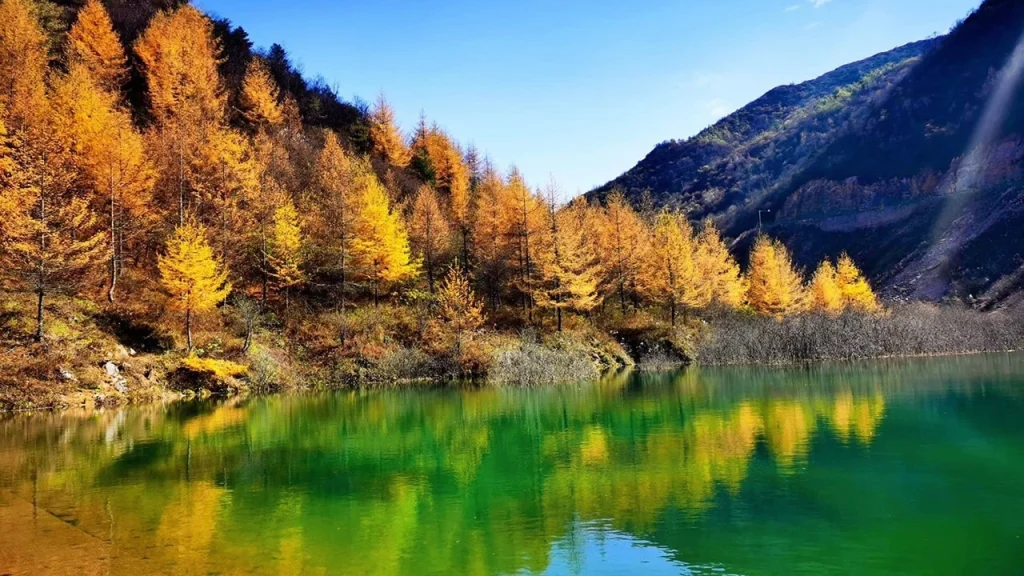When I think of Chongqing, what resonates most is its spirit of “rivers and lakes” – not just in the bubbling cauldrons of hotpot in the main city, but also in the everyday lives of people in its districts and counties. If the main city is the “gathering hall of Jianghu,” then these regions nestled among mountains, rivers, and ancient towns are the “hermitages of Jianghu’s sons and daughters.” Today, let’s set aside the trendy attractions and dive into the valleys, tread the cobblestone paths, and touch the pulse of Bayu’s most vibrant textures.

I. Natural Wonders: Earth’s Secret Gallery

- Wulong · Tiankeng Three Bridges
Zhang Yimou’s cinematography turned this spot into a go-to for wuxia films, but reality dwarfs the silver screen. Standing beneath Tianlong Bridge and gazing upward, you’ll see 120 million years of tectonic shifts frozen into three natural stone arches. The cavernous openings resemble mythical beasts’ throats, and walking through them feels like time travel. Arrive before 7:00 AM – when shrouded in mist, the bridges emerge like ethereal apparitions, perfect for recreating scenes from Curse of the Golden Flower. - Nanchuan · Jinfo Mountain
A textbook-perfect example of karst topography. In spring, azaleas blanket the slopes in fiery waves; by autumn, the ski slopes gleam under winter snow. Don’t miss Yanjing Gorge at the mountain’s base – glide downstream on a bamboo raft beneath 100-meter cliffs carved like chisel work. Keep an eye out for macaques leaping across the water, their splashes shattering the mirror-like surface. - Wushan · Lesser Three Gorges + Goddess Stream
Where the Yangtze’s drama meets hidden tranquility. Drift through Bawu Gorge in a wooden skiff, craning your neck at hanging coffins clinging to cliffs above. The boatman’s folk songs echo like ghosts of the “Ninghe Trackers” who once hauled cargo upstream. For Goddess Stream, brace for a 2-hour hike into raw wilderness – the journey culminates at Goddess Peak, which drapes itself in mist at dusk like a bride awaiting her groom. Locals call her “Amei Wanglang” (“Maiden Awaiting Her Lover”). - Shizhu · Lanying Grand Canyon
Billed as “Asia’s Deepest Gorge”, this chasm is a geologist’s dream – its walls expose textbook-perfect rock strata. At the narrowest point, a mere sidestep is required to squeeze through, while the cliffs above plunge 2,400 meters straight down. After rainstorms, cloud seas roil through the valley, transforming it into an otherworldly scene akin to Avatar’s floating mountains. For hikers, the 6-hour loop trail starting from Yunya Stronghold rewards with encounters with natural stalactite waterfalls and troops of wild macaques swinging through primeval forests.
II. Ancient Towns & Timeless Traditions: Wrinkles in Time

- Youyang · Gongtan Ancient Town
A millennium-old salt port on the Wu River, where cobblestone paths are worn smooth by centuries of horse hooves. Skip the ticketed viewpoints – duck into Xia Family Courtyard at the alley’s end, where an elderly matron sunning herself in the teahouse will serve you a bowl of youcha soup (a local tea-based broth) with fermented tofu, all while narrating the origins of the Youyang Hand-Swinging Dance. At dusk, climb to the roof of Xiqin Guild Hall to watch stilt houses mirror on the river’s surface, their wooden grains gilded by the fading light. - Fuling · 816 Nuclear Engineering Site
A Cold War-era underground nuclear plant transformed into a haunting industrial tourism landmark. Descend into 18 stories of labyrinthine tunnels, where the vaulted ceiling of the colossal reactor hall leaves visitors awestruck. The crown jewel is the “104 Nuclear Reactor” – a time capsule where hand-cranked calculators and worker ID cards of the 6,000-strong construction crew remain frozen in time, as if echoing with the roar of 1960s machinery. - Qianjiang · Zhuoshui Ancient Town
On the banks of the Apeng River, the Fengyu Gallery Bridge holds secrets of southwest China’s waterborne trade. Sip tea from a lidded cup in the bridgehead teahouse, its air fragrant with dried tangerine peel, while an old boatman sings river ballads in eastern Sichuan dialect. On the 15th night of each lunar month, bonfires blaze by the water. Tujia maidens toss embroidered silk balls and perform the “Flesh Lotus” dance – their silhouettes flickering against stilt houses like a scene straight out of Border Town.
III. Cultural Explorations: Decoding History’s Whispers

- Hechuan · Diaoyu Fortress
The “Place Where Heaven’s Whip Broke” – a battle that reshaped Eurasian history. Ascend the Guoguo Gate, where 800-year-old cannon emplacements still bear scar marks. The museum displays Song Dynasty weaponry and Mongol arrowheads, while guides point to a stretch of wall, saying: “Here, Möngke Khan fell – and with him, the Mongol Empire’s momentum.” At dusk, the confluence of the Jialing and Qu rivers glows amber, the fortress walls bathed in sunset’s honeyed light. - Dazu · Baodingshan Stone Carvings
The “Louvre of the East” reveals its genius in detail. The Thousand-Armed Guanyin’s 830 gilded hands remain exquisitely preserved, while the Cattle-Herding Relief captures peasants mid-stride, as if about to step off the stone. Rent an AR guide device to virtually restore damaged statues – a fascinating contrast between ancient craftsmanship and modern tech. - Pengshui · Chiyou Jiuli City
A 3D epic of Miao ethnic culture. The Jiuli Totem Pole carves 81 tribal symbols, its Fengyu Gallery Bridge built with mortise-and-tenon joints echoing the Luban Jing (ancient carpentry classic). At night, 99 stilt houses ignite like fireflies. From the observatory deck, the city resembles a phoenix spreading its wings. Don’t miss the Night Tour of Jiuli Palace – a light-and-shadow show resurrecting legends of Chiyou and the Yellow Emperor.
IV. Culinary Map: A Flavorful Journey Through Chongqing’s Foodie Underworld

- Wanzhou Grilled Fish
The fish is seared until the skin crisps, then smothered in pickled peppers, fermented black beans, and a drizzle of proprietary chili oil. Served with crispy konjac noodles, each bite delivers a numbing punch that leaves lips tingling – yet chopsticks keep clacking. - Youyang Oil Cake (Youbaba)
Glutinous rice flour wraps minced smoked pork, grilled over charcoal to a crackling crust. Bite through the caramelized shell, and sticky rice clings to your teeth, paired with chilled “river shrimp” jelly – a street-vendor recipe passed down by grannies. - Fuling Fermented Glutinous Rice Pudding (Youlaozao)
This breakfast staple hides eggs, sesame, and peanuts within fermented rice, steamed and topped with a syrupy glaze. Sweet with a boozy kick, locals claim it’s “the breakfast that lets you eat three more bowls of rice even after you’re full.” - Chengkou Aged Bacon
Smoked for 300 days over firewood, the pork belly’s fat gleams like amber while the lean meat turns chewy. Pan-fried with potato slices in an iron wok, it’s a mountain feast – crispy, smoky, and worth every grease-stained chopstick mark.
V. Seasonal Highlights: 365 Days of Surprises

Spring (Mar–May)
- Wushan Quchi Township: Crisp plum blossoms blanket the hills like snow.
- Pengshui Dieshi Flower Valley: Wild azaleas explode into a floral tapestry.
- Liangping Shuanggui Temple: Pear petals fall like confetti over the Zen courtyard.
Summer (Jun–Aug)
- Jinfo Mountain: Escape the heat in a forest B&B.
- Wulong Fairy Mountain: Gallop on horseback across alpine meadows chasing clouds.
- Shizhu Bizika Park: Nighttime firefly tours through glowing woods.
Autumn (Sep–Nov)
- Wuxi Hongchi Dam: Maple leaves ignite the canyons in crimson.
- Fengjie White Emperor City: Ginkgo avenue turns golden under autumn sun.
- Youyang Banxi Township: Terraced rice fields ripple like liquid gold.
Winter (Dec–Feb)
- Nanchuan Jinfo Mountain Ski Resort: Zoom down slopes dusted with powder.
- Fengdu Nantian Lake: Soak in hot springs while frost clings to pine branches.
- Chengkou Huang’anba: Camp under star-streaked skies in the frozen wild.
Chongqing’s districts and counties are the antithesis of the main city’s chaos – a slow-simmered stew of life’s simplest joys. Here, there’s no pressure to “check boxes,” only mountain breezes, river mist, temple bells, and the occasional fiery bite of local flavor. Asking “Where should I go?” is pointless. The answer lies in the journey itself – always the next stop.

Leave a Reply